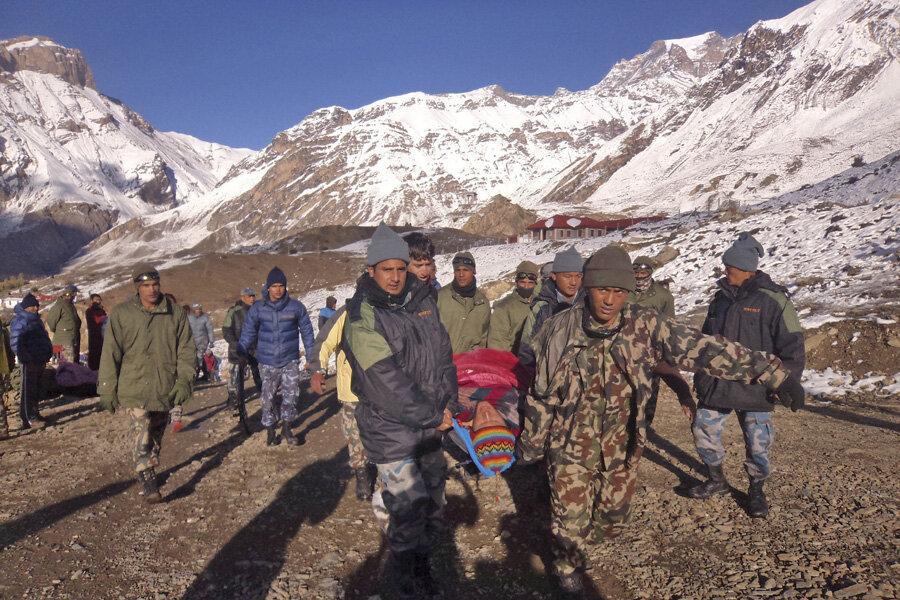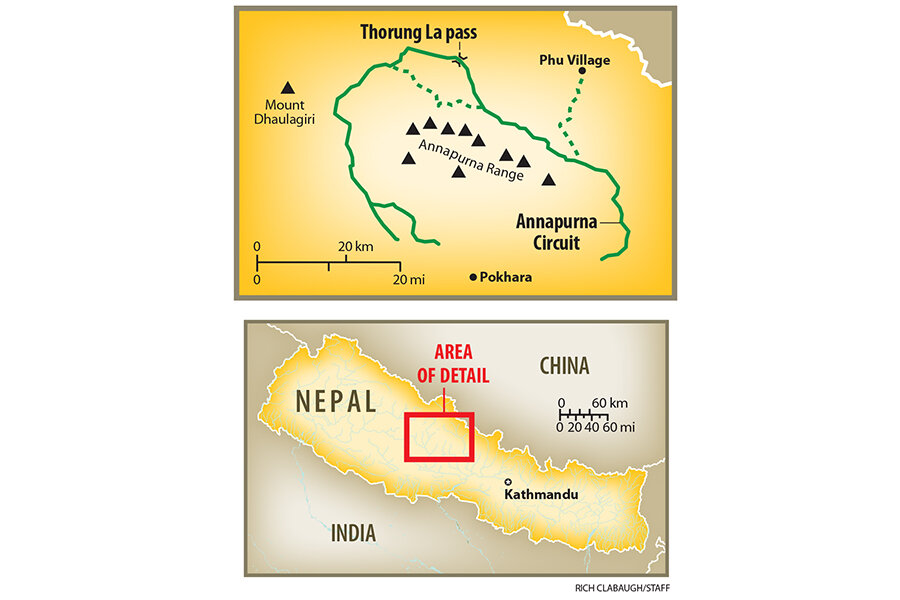Nepal avalanche: Climate change in action?
Loading...
The blizzard and avalanches that killed at least 27 people in Nepal earlier this week have raised questions about the role of climate change in extreme weather.
Climate scientists typically avoid linking specific events to climate change, but say rising global temperatures likely contribute to avalanches and other weather-related disasters in the Himalayas. The Intergovernmental Panel on Climate Change predicts that extreme weather across the globe will increase in frequency and intensity as the Earth heats up.
Meteorologists say the blizzard in Nepal was likely triggered by Cyclone Hudhud, which swept the coast of India last week and then pushed north into Nepal. Reports suggest that the cyclone was among the strongest storms on record to have hit the region.
“Storms in that region are getting stronger,” John Stone, an IPCC researcher, told The Toronto Star. “It is not inconsistent with what scientists have been saying.”
Melting glaciers in the Himalayas raise the risk of more deadly disasters, according to a report released in May by the International Center for Integrated Mountain Development, a research group based in Katmandu, the Nepali capital.
The report says Nepal's total glacier area is decreasing fast. An average of 14.67 square miles of glacier vanished every year between 1977 and 2010, shrinking the total area of Nepal’s glaciers by nearly 25 percent – numbers that don’t bode well for hikers on the country's famed mountain trails.
On Thursday, search teams rescued dozens of stranded foreign hikers and recovered bodies in Nepal’s northern mountains, CNN reports. They flew helicopters over the popular Annapurna Trail in search of others. But Ganesh Rai, a local police official, told Reuters that 10 people were still missing and presumed dead.
Thousands of foreign hikers flock to the Annapurna Trail each October, when the air is often clear and cool. The 150-mile circuit takes almost three weeks to complete and loops around Mount Annapurna, the world’s 10th-highest peak.
On Tuesday, at least 14 people died in the Thorong La Pass area of the trail and five more died in an avalanche on Mount Dhaulagiri, The Associated Press reports. The pass is nearly 18,000 ft above sea level. At least eight people died in Phu village in a separate avalanche on Wednesday.
This week’s death toll is another blow to Nepal’s mountaineering industry, which generates $3.4 million in permit fees each year for the impoverished country, Reuters reports. On April 18, an avalanche on Mount Everest killed 16 Nepali Sherpa guides. It was the deadliest disaster in history on the slopes of the world’s tallest mountain.
Reuters reports that the Nepali government has come under fire this year for doing little to improve safety conditions for hikers, despite charging them $20 for a permit.
"The government is happy collecting money from trekkers but doing nothing for them,” Keshav Panday, an official of the Trekking Agencies' Association of Nepal, told the news agency. “It must now spend the cash for making arrangements for weather forecasts and a quick response for rescue when hikers are in distress.”








